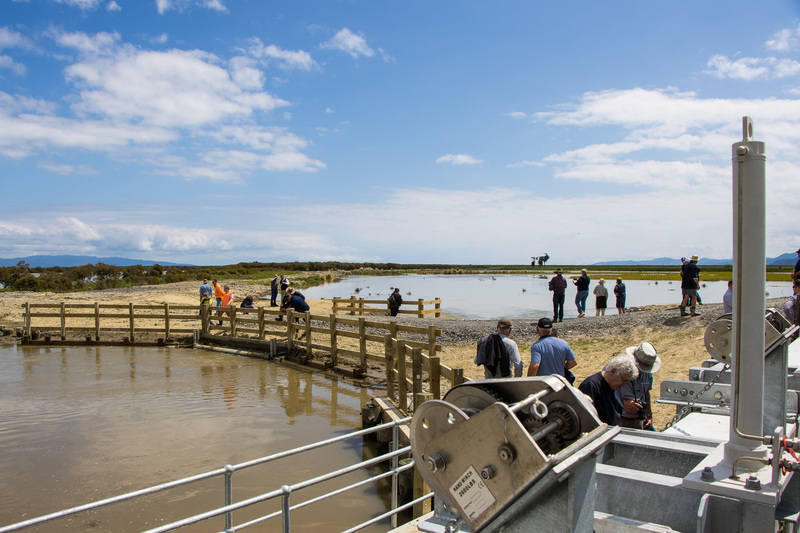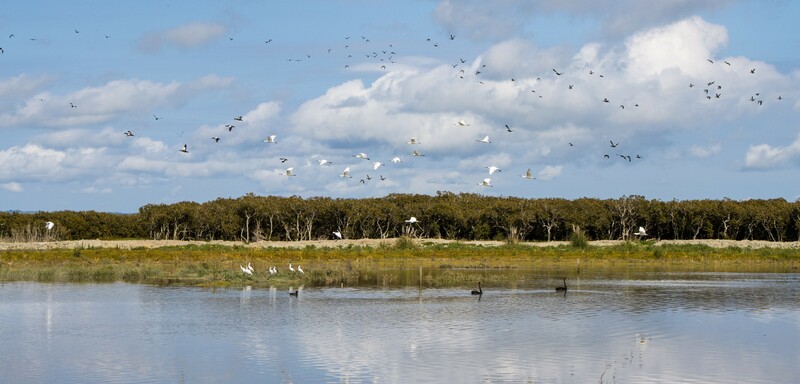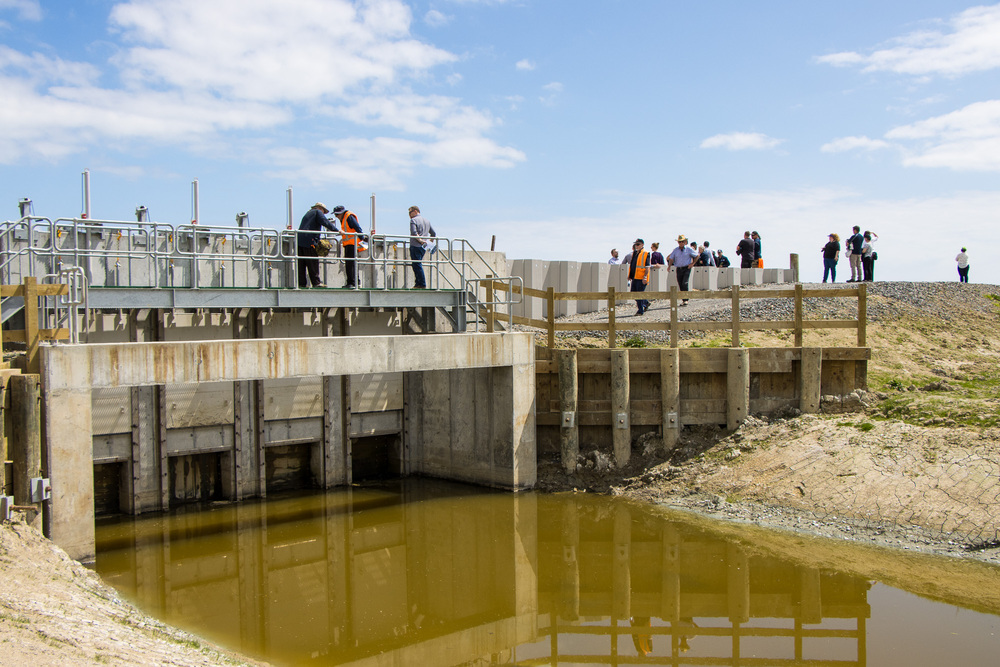The project had many complexities to navigate at the site, including river movement of approximately 50-75cm per year towards the project site, as well as riverbank erosion. Sediment had been blocking the floodgates and preventing them from opening. The old stop banks were in need of repair and protection from the tide, and a breach in a private stop bank had caused inundation on the project site, resulting in the area becoming covered in sediment and mangroves. The drainage network was also too small to deliver water from the catchment to a single floodgate.
The new floodgate protects the land from the incoming tide and conveys floodwaters to the river from the land. It is part of the Piako River flood protection scheme, which ensures long term flood protection for productive land, the people who live in this area, and major infrastructure such as roads and state highways.
A deep floodgate inlet pond was designed to remove more than 90 per cent of sediment from catchment floodwaters prior to discharge into the river, providing refuge for fish (particularly tuna/eels) year-round, even during droughts. The pond and a new high-capacity drainage network can clear floodwaters from the wider catchment within 24 hours – previously it would have taken three days to completely remove rainfall runoff.

The project also provides a safe foraging and roosting area for shorebirds, which is particularly important for the migratory species that are declining due to land reclamation and habitat loss along their flyways. The council worked with Pūkorokoro Miranda Shorebird Centre to enhance 10ha of the land for shorebirds. Raised island roosts large enough to support the entire shorebird population of the Firth of Thames were created using sediment excavated from the site.

The habitat area also provides refuge for aquatic life. A fish-friendly tidal control structure was engineered to allow tidal inflows into the area and prevent stagnation of water. This structure includes a screen to help prevent mangrove seeds from entering and reinfesting the habitat area. Nearly 3,000 native plants (mostly low growing) have been planted adjacent to the river and within the habitat area.
An official opening to celebrate the completion of the project was held on Monday 21 October.
